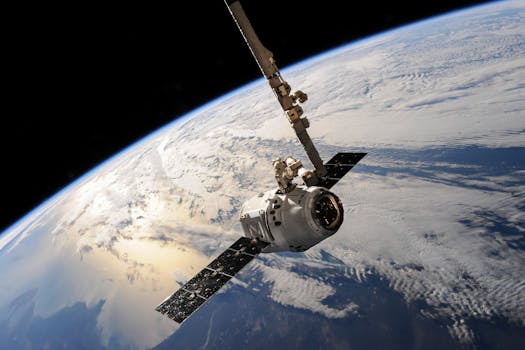The Future of Satellites: Revolutionizing Global Connectivity
The future of satellites is poised to revolutionize global connectivity, enabling faster and more reliable communication networks. With advancements in space technology, satellites are becoming increasingly important for various applications, including communication, navigation, and remote sensing.

The Future of Satellites: Revolutionizing Global Connectivity
The future of satellites is poised to revolutionize global connectivity, enabling faster and more reliable communication networks. With advancements in space technology, satellites are becoming increasingly important for various applications, including communication, navigation, and remote sensing. The focus keyword, Future of Satellites, is an essential aspect of this revolution, as it encompasses the ongoing developments and innovations in the field of satellite technology.
Advancements in Satellite Technology
Recent years have witnessed significant advancements in satellite technology, driven by investments from governments, private companies, and research institutions. One of the key areas of development is the use of smaller, more efficient satellites, such as CubeSats and SmallSats, which offer greater flexibility and cost-effectiveness. These satellites are being used for a variety of applications, including Earth observation, communication, and scientific research.
Another area of advancement is the development of reusable launch vehicles, which are capable of carrying satellites into orbit and then returning to Earth for refurbishment and reuse. This technology has the potential to significantly reduce the cost of launching satellites, making it more accessible to a wider range of organizations and countries.
Applications of Satellites
Satellites have a wide range of applications, including communication, navigation, remote sensing, and scientific research. Communication satellites, such as geostationary satellites and low-Earth orbit (LEO) satellites, play a critical role in enabling global connectivity, providing internet access, and facilitating international communication. Navigation satellites, such as GPS and GLONASS, provide location information and timing signals, which are essential for various applications, including aviation, maritime, and land transportation.
Remote sensing satellites are used to collect data about the Earth’s surface, atmosphere, and oceans, providing valuable insights for applications such as weather forecasting, climate monitoring, and natural resource management. Scientific research satellites, such as the Hubble Space Telescope, are used to study the universe, making groundbreaking discoveries and advancing our understanding of the cosmos.
Challenges and Opportunities
While the future of satellites holds much promise, there are also challenges and opportunities that need to be addressed. One of the key challenges is the growing problem of space debris, which poses a risk to operational satellites and other space-based assets. To mitigate this risk, there is a need for sustainable practices and regulations to ensure the long-term safety and security of space operations.
Another challenge is the need for international cooperation and agreements to govern the use of space and satellites. As the number of satellites in orbit increases, there is a growing need for coordination and cooperation to avoid collisions and ensure the efficient use of orbital resources.
Despite these challenges, the future of satellites offers many opportunities for innovation and growth. The development of new satellite technologies and applications has the potential to create new industries and job opportunities, driving economic growth and improving the quality of life for people around the world.




